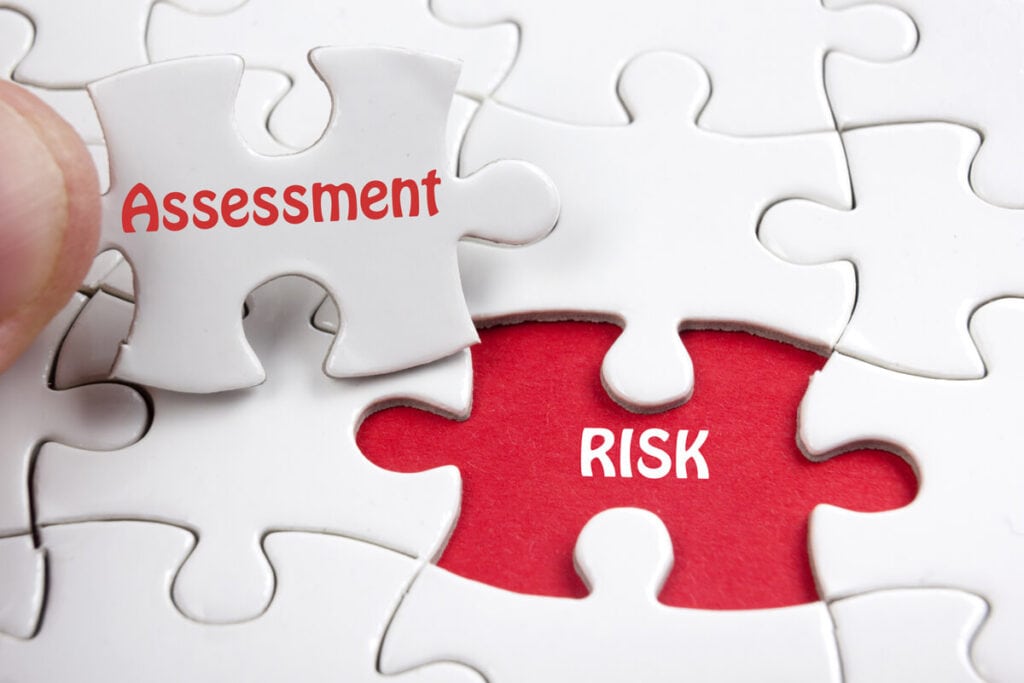Key Highlights
- A comprehensive business continuity plan checklist is essential to create a robust business continuity plan that will ensure organizations the availability of critical business functions and for allowing them to respond more effectively to emergencies.
- The business continuity plan checklist includes conducting a thorough business impact analysis, performing regular risk assessments, developing recovery strategies for IT and operations, establishing clear communication plans, implementing and training. The plan needs to be frequently reviewed, tested, and updated.
- Adopting NIST and FEMA frameworks can provide guidance and enhance the effectiveness of a business continuity plan.
- Key components of an effective business continuity plan include understanding the importance of risk assessments, identifying critical operations and resources, outlining IT recovery procedures, planning for operational resilience, and ensuring regular drills and staff readiness.
- Address questions such as: What is a business continuity plan? How often should a business continuity plan be tested? What are the key elements of a business impact analysis? What steps should be taken to update a business continuity plan? Why is regular training important for business continuity planning? How to ensure effective communication during a business disruption? What are the benefits of having a robust business continuity plan?
Table of Contents
ToggleIntroduction
Businesses continue to face threats that can disrupt their operations and put their long-term viability at risk. From natural disasters to cybersecurity breaches, the potential for business disruptions is ever-present, making a robust business continuity plan crucial. Business disruptions are inevitable, so anticipating them is important.
A business continuity plan details how an organization will protect critical business functions in the event of an emergency. It is designed to ensure that the organization can maintain operations and minimize the impact of disruptions. By creating a business continuity plan, organizations can proactively identify potential risks, develop strategies to mitigate them. The plan facilitates the establishment of protocols for responding to emergencies. Disruptions can be as simple as a developer testing a fix to the POS system chain and accidentally taking down the live system when he thought it was the test system. Procedures change a change management system will prevent such outages. Not being able to take payments at hundreds of stores is considered a disaster because it disrupts a missional critical transaction system.
A well-designed business continuity plan (BCP) starts with a business continuity plan checklist to ensure we have everything in place. With a robust business continuity plan in place, organizations can minimize financial losses, protect their reputation, and maintain the trust of their stakeholders. For these reasons, it is essential for senior management, including the BCP Sponsor and Business Continuity Steering Committee, to be involved in the development and management of the plan.

What is a Business Continuity Plan?
A business continuity plan is a documented strategy that outlines how an organization will continue its critical business functions in the event of emergencies or disruptions. It states how an organization will maintain operations and minimize disruptions. The business continuity plan includes a detailed recovery plan that outlines the steps to be taken to restore normal operations, recover data, and minimize downtime. It covers communication protocols, resource allocations, and recovery strategies, including a disaster response plan, to ensure the organization can effectively respond to any crisis or emergency.
Complete Business Continuity Plan Checklist
Creating a comprehensive business continuity plan requires careful planning and consideration to ensure that all critical areas are addressed. The business continuity plan checklist should include the following key elements.
1. Conduct a Thorough Business Impact Analysis
A crucial step in creating a robust business continuity plan is conducting a thorough business impact analysis (BIA). A BIA is a systematic process of identifying and evaluating the potential impact of disruptions on critical business processes, including their interdependencies. It helps organizations prioritize recovery efforts based on the importance and financial impact of these processes, as well as establish recovery time objectives (RTOs) and recovery point objectives (RPOs) for data. This is a key component of business continuity management (BCM) s should not be overlooked in the planning process.
During the BIA, organizations assess the potential consequences of various disruptions, such as equipment failure, natural disasters, or cyber-attacks, on their critical business processes. This analysis helps identify the resources, timeframes, and recovery strategies required to minimize the impact of these disruptions.
The BIA considers factors such as the financial impact of downtime, the impact on customers and suppliers, regulatory compliance requirements, and the organization’s reputation. By understanding the potential consequences of disruptions, organizations can allocate resources effectively, develop appropriate recovery strategies, and prioritize their recovery efforts to ensure the continuity of critical business functions, including the timely detection of potential threats.
2. Perform Risk Assessments Regularly
Regularly performing risk assessments is a core component of a comprehensive business continuity plan. Risk assessments help organizations identify potential threats and vulnerabilities that could disrupt their operations and develop strategies to mitigate these risks.
Risk assessments involve analyzing internal and external factors that could impact the organization’s ability to operate effectively. This includes identifying potential threats, such as natural disasters, cybersecurity breaches, or equipment failures, and assessing their likelihood and potential impact. By understanding these risks, organizations can develop appropriate mitigation strategies and allocate the right resources to minimize the impact of disruptions.
Regular risk assessments also help organizations stay proactive in detecting emerging threats and adapting their business continuity strategies accordingly. By monitoring the risk landscape and continuously assessing potential risks, organizations can ensure that their business continuity plans remain effective and up-to-date.
3. Develop Backup Recovery Strategies for IT and Operations
Developing recovery strategies for both IT systems and critical business operations is essential for a robust business continuity plan. Organizations must have contingency plans in place to recover and restore their IT infrastructure and ensure the continuity of their core business functions.
For IT systems, recovery strategies may include data backup and recovery procedures, failover solutions, and alternate site arrangements. These strategies aim to minimize downtime and ensure the availability and integrity of critical data and systems.
Similarly, recovery strategies for business operations involve identifying alternate processes, resources, and facilities to maintain essential functions during a disruption. This may involve implementing work-from-home arrangements, outsourcing certain operations, or establishing agreements with alternative suppliers or service providers.
Developing comprehensive recovery strategies can ensure a swift and effective response to emergencies.
4. Establish Clear Communication Plans
Clear and effective communication is crucial during a business disruption or emergency. Establishing clear communication plans as part of the business continuity plan helps ensure that all relevant stakeholders are informed and can respond appropriately.
Communication plans should outline protocols for internal and external communication, including contact lists, communication channels, and designated spokespersons. These plans should consider different scenarios, such as natural disasters, cybersecurity incidents, or public health emergencies, and provide guidance on how to communicate with employees, customers, suppliers, regulatory authorities, and the media.
By establishing clear communication plans, organizations can ensure that accurate information is disseminated in a timely manner, minimizing confusion and maintaining trust among stakeholders. Effective communication during a crisis helps coordinate response efforts, manage expectations, and provide necessary updates to all parties involved.
5. Implement Testing and Training Protocols
Implementing regular testing and training protocols is vital to ensure the effectiveness of a business continuity plan. Testing and training help identify gaps in the plan, familiarize employees with their roles and responsibilities, and ensure that recovery strategies and processes are well understood.
Here are key aspects to consider when implementing testing and training protocols:
- Conduct regular drills and exercises to simulate different scenarios and assess the organization’s response capabilities.
- Test the recovery time objective (RTO) to ensure that critical functions can be restored within the desired timeframe.
- Provide comprehensive training programs to employees, covering topics such as crisis management, emergency procedures, and specific roles during a disruption.
- Incorporate feedback from drills and exercises into the continuous improvement of the business continuity plan.
- Conduct tabletop exercises and simulations to evaluate the effectiveness of the plan and identify areas for improvement.
6. Review and Update the Plan Continuously
Continuously reviewing and updating the business continuity plan is crucial to ensure its effectiveness and alignment with the organization’s evolving needs and risks. Regular reviews and updates help address emerging threats, incorporate lessons learned from drills or actual incidents, and adapt the plan to changes in technology or business processes.
Key steps for reviewing and updating the business continuity plan include:
- Establishing a business continuity management framework that outlines roles, responsibilities, and processes for plan maintenance.
- Conducting periodic reviews of the plan’s effectiveness, incorporating feedback from drills, exercises, or actual incidents.
- Identifying areas for improvement and implementing necessary changes or enhancements to the plan.
- Ensuring that the plan remains aligned with the organization’s strategic objectives, risk appetite, and regulatory requirements.
- Communicating updates and changes to relevant stakeholders, including employees, suppliers, and customers.

7. Utilize NIST and FEMA Frameworks for Guidance
Utilizing frameworks provided by organizations such as the National Institute of Standards and Technology (NIST) and the Federal Emergency Management Agency (FEMA) can enhance the effectiveness of a business continuity plan. These frameworks offer guidelines, best practices, and standardized approaches for developing and implementing robust business continuity strategies.
The following table provides an overview of the NIST and FEMA frameworks:
|
Framework |
Description |
|
NIST SP 800-34 |
Provides guidance on developing information technology (IT) contingency plans, including business impact analysis, recovery strategies, plan development, and testing. |
|
NIST SP 800-53 |
Outlines security controls and best practices for managing and protecting IT systems and data. |
|
FEMA’s BCP Guide |
Offers a comprehensive approach to developing and implementing a business continuity plan, including assessing risks, developing strategies, and testing and exercising the plan. |
Key Components of an Effective Business Continuity Plan
An effective business continuity plan consists of several key components that work together to ensure the organization’s resilience and ability to respond to disruptions. These components include:
- Understanding the Importance of Risk Assessment: Conducting thorough risk assessments to identify potential threats and vulnerabilities to the organization’s operations and prioritize recovery efforts.
- Identifying Critical Operations and Resources: Identifying the core business functions and critical resources that must be prioritized for recovery to minimize the impact of disruptions.
- Outlining IT Recovery Procedures: Developing strategies and procedures for recovering IT systems and data to ensure their availability and integrity during and after a disruption.
- Planning for Operational Resilience: Establishing plans and strategies to ensure the organization’s ability to maintain operations, even in the face of disruptions or emergencies.
- The Role of Regular Drills and Staff Readiness: Conducting regular drills and training programs to ensure that employees are prepared to respond effectively during a crisis and minimize downtime.

Understanding the Importance of Risk Assessment
Risk assessment is a critical component of any business continuity plan. It involves identifying and evaluating potential risks and vulnerabilities that could disrupt an organization’s operations. By understanding these risks, organizations can develop strategies to mitigate them, prioritize recovery efforts, and ensure the continuity of critical functions.
Risk assessment helps organizations:
- Identify potential threats and vulnerabilities that could impact the organization’s operations.
- Prioritize recovery efforts based on the importance and potential impact of critical functions.
- Develop appropriate strategies and resources to mitigate risks and minimize the impact of disruptions.
- Continuously monitor and assess emerging risks to adapt the business continuity plan accordingly.
Identifying Critical Operations and Resources
Identifying critical operations and resources is a crucial step in developing a robust business continuity plan. It involves determining the core business functions and resources that are essential for the organization’s operations and prioritizing their recovery efforts.
By identifying critical operations and resources, organizations can:
- Allocate resources effectively during a disruption, ensuring that essential functions are restored as quickly as possible.
- Prioritize recovery efforts based on the importance and impact of critical functions.
- Develop recovery strategies and plans specifically tailored to the critical operations and resources.
- Minimize downtime and financial losses by focusing on the most crucial aspects of the organization’s operations.
Identifying critical operations and resources requires a thorough understanding of the organization’s business processes and dependencies. It involves analyzing the potential impact of disruptions on different functions and determining the resources needed for their recovery process. By prioritizing these critical areas and identifying key personnel from across the organization, including IT, HR, finance, and operations, organizations can ensure the continuity of essential operations during a crisis.

Outlining IT Recovery Procedures
IT recovery procedures are a vital component of a business continuity plan, particularly in today’s digitally dependent business environment. These procedures outline the strategies and processes for recovering and restoring IT systems, data, and infrastructure in the event of a disruption.
Key aspects of IT recovery procedures include:
- Data backup and restoration: Establishing regular backup schedules and procedures to ensure that critical data can be restored quickly and effectively. Data loss is preventable as long as you build in data protection schemes such as mirroring drives. Arcserve provides a useful resource linked here.
- Disaster recovery planning: Developing strategies, processes, and resources for recovering IT systems and infrastructure, including alternate site arrangements and failover solutions.
- Crisis management: Outlining roles and responsibilities for IT personnel during a disruption, including incident response and coordination with other departments.
- Testing and validation: Regularly testing and validating the IT recovery procedures through drills and exercises to identify any gaps or areas for improvement.

Planning for Operational Resilience
Operational resilience is key to maintaining business continuity and effectively responding to disruptions. Planning for operational resilience involves developing strategies and processes to ensure the organization’s ability to maintain essential operations, even in the face of emergencies or unexpected events.
Key considerations for planning operational resilience include:
- Identifying alternate processes and resources to maintain essential functions during a disruption.
- Establishing agreements with alternative suppliers or service providers to ensure continuity of critical supplies or services.
- Implementing work-from-home arrangements or remote access solutions to enable employees to continue their work during a crisis.
- Developing protocols for facility stabilization, evacuation, or other emergency response procedures to protect staff and assets.
- Integrating emergency preparedness measures, such as communication plans and crisis management protocols, into the overall business continuity plan.

The Role of Regular Drills and Staff Readiness
Regular drills and staff readiness play a crucial role in ensuring the effectiveness of a business continuity plan. By conducting drills and training programs, organizations can assess their preparedness, identify areas for improvement, and ensure that employees are ready to respond effectively during a crisis.
Key aspects of regular drills and staff readiness include:
- Simulating different scenarios to test the organization’s response capabilities and identify any gaps or weaknesses in the plan.
- Providing comprehensive training programs to familiarize employees with their roles and responsibilities during a crisis.
- Testing communication protocols and coordination among different departments and stakeholders.
- Incorporating feedback from drills and exercises into the continuous improvement of the business continuity plan.
- Ensuring that staff members are aware of emergency procedures, crisis management protocols, and the overall business continuity plan.
Conclusion
In conclusion, a robust Business Continuity Plan is a fundamental aspect of organizational resilience. By conducting thorough business impact analyses, performing regular risk assessments, and establishing comprehensive recovery strategies, businesses can mitigate potential disruptions effectively. Clear communication plans, testing protocols, and continuous plan updates further enhance preparedness. Leveraging frameworks like NIST and FEMA provides invaluable guidance for creating a resilient plan. Remember, proactive planning and regular training are key to ensuring operational readiness during unforeseen events. Prioritizing these elements will bolster your organization’s ability to navigate challenges and maintain business continuity seamlessly.

Frequently Asked Questions
How Often Should a Business Continuity Plan Be Tested?
A business continuity plan should be tested regularly to ensure its effectiveness. The frequency of testing depends on factors such as the organization’s risk profile, recovery time objectives, and industry standards. Regular testing, including drills and exercises, helps identify gaps, enhance preparedness, and ensure the plan remains up-to-date.
What Are the Key Elements of a Business Impact Analysis?
A business impact analysis (BIA) involves assessing the potential impact of disruptions on critical business functions. Key elements of a BIA include identifying critical functions, assessing their financial impact, estimating downtime, and considering the needs and expectations of stakeholders. The BIA helps prioritize recovery efforts and allocate resources effectively.
How Can NIST and FEMA Frameworks Enhance a Business Continuity Plan?
NIST and FEMA frameworks provide guidance and best practices for developing and implementing a robust business continuity plan. These frameworks offer standardized approaches, risk assessment methodologies, and tools that enhance the effectiveness of a business continuity plan, ensuring resilience and the ability to respond to disruptions.
What Steps Should Be Taken to Update a Business Continuity Plan?
Updating a business continuity plan involves several steps, including:
- Regularly reviewing the plan’s effectiveness, incorporating feedback from drills and exercises.
- Assessing emerging risks and changes in technology or business processes.
- Incorporating lessons learned from actual incidents or near misses.
- Ensuring alignment with the organization’s strategic objectives, risk appetite, and regulatory requirements.
- Communicating updates and changes to relevant stakeholders, including employees, suppliers, and customers.
Why Is Regular Training Important for Business Continuity Planning?Regular training is crucial for effective business continuity planning. It ensures that employees are familiar with their roles and responsibilities during a crisis, enhances their readiness to respond, and improves overall crisis management and emergency response capabilities. Training programs help employees understand the business continuity plan, practice emergency procedures, and minimize downtime. I have been in situations where IT storage had evolved at our data center but the failover site had not upgraded, so my data became unrecoverable.
How to Ensure Effective Communication During a Business Disruption?
To ensure effective communication during a business disruption, organizations should:
- Develop clear communication protocols and plans for internal and external stakeholders.
- Establish designated spokespersons and communication channels.
- Provide timely and accurate updates to all parties involved.
- Coordinate communication efforts with emergency response teams.
- Regularly review and test communication plans to identify areas for improvement and ensure they remain effective during a crisis.
Effective communication during a disruption helps maintain trust among stakeholders, minimize confusion, and facilitate a coordinated response.
What Are the Benefits of Having a Robust Business Continuity Plan?
Having a robust business continuity plan offers several benefits, including:
- Enhanced business resilience and the ability to respond effectively to disruptions.
- Maintaining customers by keeping them informed.
- Minimized financial losses and downtime during a crisis.
- Preservation of the organization’s reputation and stakeholder trust.
- Protection of critical business processes and data.
- A competitive advantage over organizations that lack a comprehensive plan.
A robust business continuity plan ensures that the organization can maintain operations, minimize the impact of disruptions, and quickly recover from a crisis.





